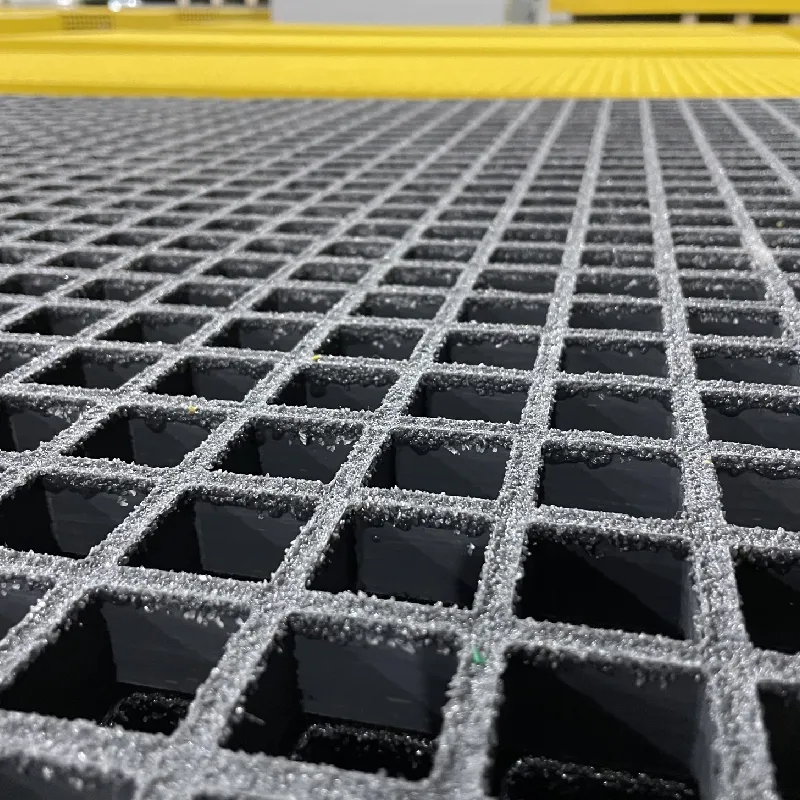loading...
- No. 9, Xingyuan South Street, Dongwaihuan Road, Zaoqiang County, Hengshui, Hebei, China
- admin@zjcomposites.com
- +86 15097380338
- Welcome to visit our website!
frp division bar
Understanding FRP Division Bars A Comprehensive Overview
Fiber Reinforced Polymer (FRP) division bars have emerged as a significant innovation in the construction and engineering sectors due to their unique properties and versatility. These advanced materials, composed of polymer matrix reinforced with fibers, offer various advantages over traditional materials such as steel and concrete. This article delves into the structure, applications, benefits, and future potential of FRP division bars.
Structure of FRP Division Bars
FRP division bars consist of a composite material where the polymer resin serves as the matrix, while fibers—typically glass, carbon, or aramid—provide the reinforcement. This combination results in a material that exhibits high strength-to-weight ratios, excellent corrosion resistance, and significant durability. The manufacturing process often involves techniques such as pultrusion or filament winding, allowing for customization in terms of size, shape, and fiber orientation to meet specific load requirements.
Applications in Construction and Engineering
FRP division bars have found applications in various fields, especially within construction and engineering. They are commonly used in
1. Reinforced Concrete Structures FRP bars can replace traditional steel reinforcement in concrete beams and slabs, offering benefits such as reduced weight, improved durability, and resistance to chemical attacks.
2. Bridges Due to their lightweight nature, FRP division bars are ideal for bridge construction, where they help minimize the overall load while maintaining structural integrity.
3. Marine Applications In environments prone to corrosion, such as coastal areas, FRP offers a long-lasting solution for docks, piers, and marine structures.
4. Wind Energy FRP materials are increasingly used in wind turbine blades, where strength and lightness are essential for efficient energy capture and durability against the elements.
5. Electrical and Telecommunications FRP division bars serve as excellent insulators, making them suitable for utility poles and antennas, where electrical insulation is critical.
Benefits of FRP Division Bars
The adoption of FRP division bars brings several benefits
frp division bar

1. Corrosion Resistance
One of the most significant advantages of FRP is its inherent resistance to corrosion. Unlike steel, which may corrode over time, leading to structural failure, FRP materials maintain their performance in harsh environments, reducing maintenance costs and extending the lifespan of structures.
2. Lightweight Properties
FRP division bars are considerably lighter than steel, making them easier to transport and handle during installation. This can lead to reduced labor costs and lower transportation expenses, as fewer resources are needed to manage and install these materials.
3. High Strength-to-Weight Ratio
FRP materials offer an impressive strength-to-weight ratio, ensuring they can withstand heavy loads while contributing minimal weight to the overall structure. This characteristic is particularly vital in applications where weight reduction is crucial.
4. Versatile Design Options
FRP division bars can be manufactured in various shapes and sizes, allowing engineers to design structures with specific performance characteristics tailored to their requirements.
Future Potential
The future of FRP division bars looks promising as advancements in materials science continue to evolve. Ongoing research focuses on improving the mechanical properties of these materials, enhancing their thermal resistance, and developing sustainable production methods. As the construction industry increasingly prioritizes sustainability and efficiency, FRP division bars may play a pivotal role in the development of green building practices.
Conclusion
In summary, FRP division bars represent a significant advancement in construction and engineering materials. Their unique properties, including corrosion resistance, lightweight, and high strength, make them a viable alternative to traditional materials. As industries continue to explore innovative approaches to meet the demands of modern infrastructure, FRP division bars are likely to become integral components of future building projects. The potential for continued research and development only adds to the intrigue surrounding FRP technology, ensuring its relevance in the construction landscape for years to come.
-
The Rise of FRP Profiles: Strong, Lightweight, and Built to LastNewsJul.14,2025
-
SMC Panel Tanks: A Modern Water Storage Solution for All EnvironmentsNewsJul.14,2025
-
GRP Grating: A Modern Solution for Safe and Durable Access SystemsNewsJul.14,2025
-
Galvanized Steel Water Tanks: Durable, Reliable, and Ready for UseNewsJul.14,2025
-
FRP Mini Mesh Grating: The Safer, Smarter Flooring SolutionNewsJul.14,2025
-
Exploring FRP Vessels: Durable Solutions for Modern Fluid HandlingNewsJul.14,2025
-
GRP Structures: The Future of Lightweight, High-Performance EngineeringNewsJun.20,2025
